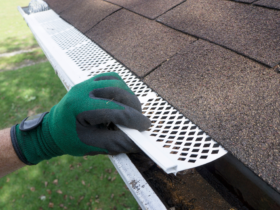Packing is a critical aspect of any move. How you pack your goods determines their safety during the move. Additionally, proper packaging decreases the space needed and the number of packing boxes. Nonetheless, you should understand how to do it right; otherwise, you will have a lot of damage to deal with upon arrival.
Here is to pack your valuables like a pro:
1. Cut back on clutter
Walk through each room and gather the items you no longer need. Give out or sell the things that won’t fit in your new house. This will help save on space in your new home and also minimize moving expenses. Decluttering is an excellent way to start life in a more spacious place.
2. Start packing as early as possible
The McLaughlin Transportation team advises clients to pack early enough. Therefore, make early packing preparations as soon as possible to prevent feeling rushed in the final days of the move. Start with seasonal clothing, such as boots and winter coats.
Continue with the goods you won’t need for some time, such as artwork, home furnishings, extra towels, sheets, and blankets. Early preparation will allow you time to do things right. It also ensures that your belongings are secure and makes things simpler for the movers.
3. Clean as you go
By cleaning early, you avoid having to deal with everything at once after packing. This also applies to objects you are carrying with you. To avoid making a mess when it comes time to unpack in your new place, clean and dust goods before packing them. This way, everything will be tidy, washed off, and prepared for use!
4. Pack the least used room
Begin packing in places you don’t frequently use, such as the carport, cabinets, attic, basement, or guest room. Afterward, go on to the area you use more regularly to ensure you aren’t putting things away that you will need in a few weeks.
5. Protect breakables by using linens and clothes
Wrap breakable and fragile items like glassware and gadgets in your blankets, sheets, and clean clothes. Use thick blankets to put padding on your valuables. You can also use plastic wrapping paper to ensure enhanced safety. The movers will have an easy time when moving the wrapped goods, for this will minimize breakage.
6. Label your boxes
Label your boxes accordingly and indicate the contents and the destination room. This helps during unpacking since you will know where to place the boxes. You can add extra marks on the sides of the box so you can identify the thing you need after you arrive in your place. Proper labeling will help the movers exercise care for fragile goods, thus minimizing damage.
Final thoughts
Packing and unpacking may be the most difficult parts of moving. But if you know how to play the game, everything goes more smoothly. There you have it, then! If you adhere to this straightforward advice, packing will be a lot simpler than you might imagine.






























Leave a Reply